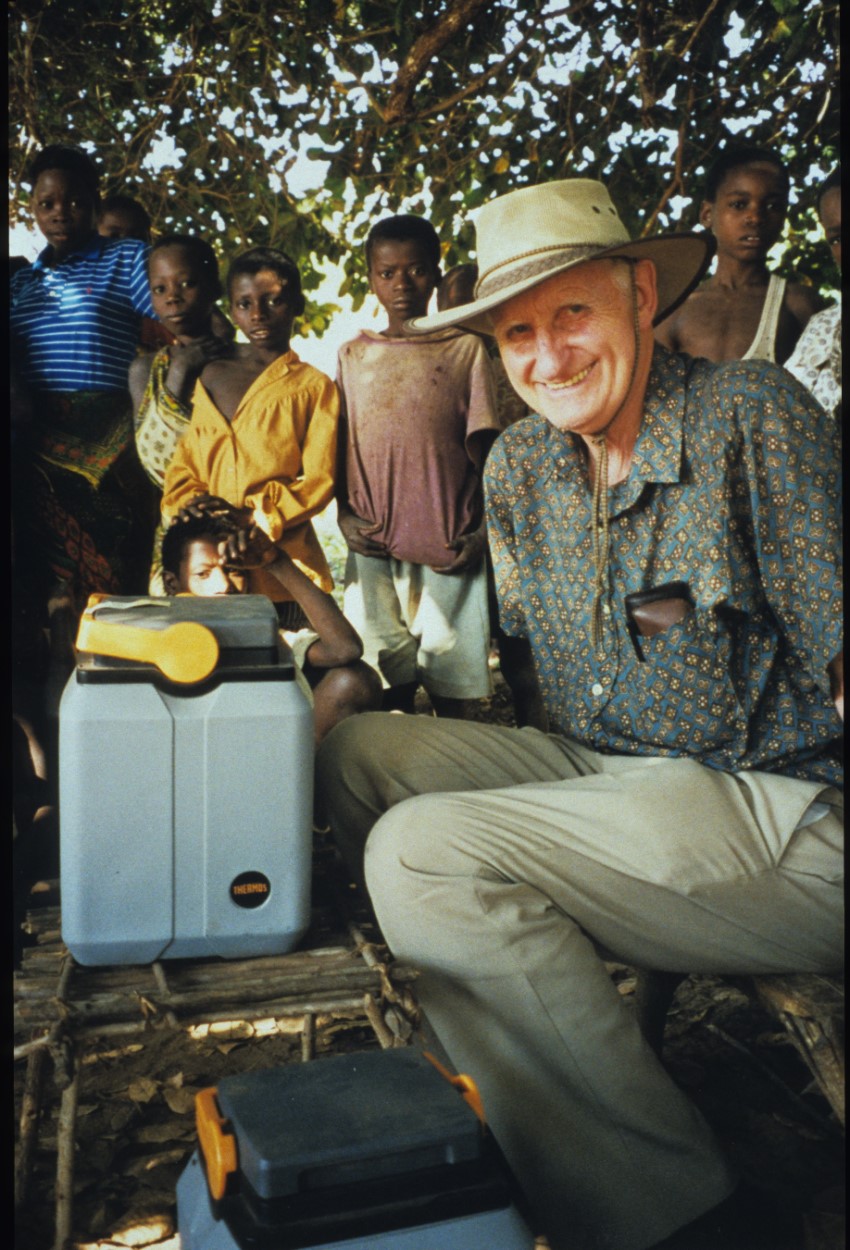Preventing konzo - the retirement project of Professor Howard Bradbury, AM

Professor Howard Bradbury followed in his father’s footsteps, when he decided to study science. “Dad was a chemist and he used to keep telling me stories about it all the time. I couldn’t understand what he said, but somehow something just rubbed off and so I always thought science would be real fun, so I just went into it. I must say I’ve enjoyed every minute of it.”
After a PhD at Birmingham University, a postdoctoral fellowship at Harvard, and six years at CSIRO, Howard took up a senior lectureship in chemistry at The Australian National University in 1961.
From 1961 to 1988 he pursued his research and teaching career at ANU, working on the structure of wool and NMR studies of biological macromolecules, proteins and enzymes. He was awarded DSc degrees from Melbourne University and ANU and three research medals from the Royal Australian Chemical Institute and Melbourne University. Eight of his former research students are currently professors.
However, after speaking at an NMR conference in Bombay, India, in 1974, he saw the poverty and deprivation of the poor people, and was really shaken by it. Back in Australia, he began to wonder what he could do, as a chemist, to help people in developing countries, and after three years, began to change his research objectives, until food chemistry became his main research focus.
In the mid-1980s, he undertook a major project to analyse all the root crops of the South Pacific, supported by ACIAR (Australian Centre for International Agricultural Research), during which he confirmed that cassava, one of the most important root crops, contained cyanide.
Howard retired from Chemistry in December 1988, and took up a Visiting Fellowship in the Botany Department at ANU, to focus on cyanide in cassava.
His first project was to develop a simple method to determine the amount of cyanide in cassava eaten by people in Mozambique, one of the poorest countries in the world. There were no good laboratories in most of Africa, so the method needed to be simple enough that a high school student could use it. In 1996, Howard travelled to Mozambique to test the method in the field in collaboration with Australian doctor Julie Cliff who worked there, who had previously told him about konzo. He then developed a simple kit method to measure thiocyanate in urine, which shows cyanide intake over previous days. The kits are given away for free to health workers in developing countries and sold to workers in the first world.
“We thought, well, ok, now these people can know how much cyanide they are eating, but they’re still getting sick – it hasn’t really stopped anything”, Howard said. “I thought, by the grace of God, we might develop some method which would remove the cyanide.”
He tried exposing cassava flour to air for six months back in his Canberra lab to see if cyanide levels dropped. No change. However, once he placed the flour in air saturated with water, he found that the cyanide levels dropped slightly. Taking it a step further, he then mixed water into the flour, and to his amazement, after only five hours at room temperature, the cyanide levels dropped dramatically. “That was the basis of the wetting method”, said Howard.
After some modifications for conditions in Mozambique, the final method is to simply mix the flour with water in a bowl, then spread it in a thin layer on a mat for two hours in the sun so that the hydrogen cyanide gas can escape.
The final method was trialled in Mozambique in 2005, and the women liked it, said Howard. “One of the reasons they liked it, was that the cyanide compound’s got a bitter flavour and when you get rid of it, the food becomes nice and sweet to eat.”
Next came the challenge of changing the habits of the women, who prepare the food. In 2008, Howard contacted Professor Banea, director of the National Institute of Nutrition in Kinshasa, the capital of the Democratic Republic of Congo. In 2009, they used a modest sum raised from selling the cyanide testing kits in first world countries to go to a small konzo village called Kay Kalenge. After getting approval from the chief, they taught the wetting method to high ranking women, who then taught other village women.
The villagers of Kay Kalenge are still using the wetting method to remove cyanide from their staple food, and in the years since, there have been no new cases of konzo.
The collaboration with Professor Banea has been very fruitful, said Howard. “We supply the kits, we supply the know-how – the wetting method was developed here (at ANU), and he and his team apply it in his own country to his own people and in that way, we’ve been able to prevent konzo. In thirteen villages with 10000 people.”
“All the technology is there, the current cost is $25 per person – we just need somebody or some institution to fund it.”
Professor Howard Bradbury is about to retire for the second time, at the age of 89. He was awarded the Member of the Order of Australia (AM) in recognition of his services to science as a plant biochemist, particularly through research and the development of a test kit to measure levels of cyanide in cassava and other food crops. He was awarded a $5000 prize by the Institute of Chemical Engineers for his discovery of the wetting method, which was spent on konzo prevention. He has published about 250 papers.
“I think I’ve had a wonderful career, and amazingly, this particular project has been a retirement project. Right at the end of my career I’ve had this wonderful opportunity, by the grace of God, to be able to prevent a preventable disease in Africa. It’s something I’d never thought would be possible.”
